C++ 对象构造顺序
清风自在 流水潺潺 人气:0一、局部对象的构造顺序
对于局部对象
当程序执行流到达对象的定义语句时进行构造
下面看一个局部对象的构造示例:
#include <stdio.h>
class Test
{
private:
int mi;
public:
Test(int i)
{
mi = i;
printf("Test(int i): %d\n", mi);
}
Test(const Test& obj)
{
mi = obj.mi;
printf("Test(const Test& obj): %d\n", mi);
}
};
int main()
{
int i = 0;
Test a1 = i;
while( i < 3 )
{
Test a2 = ++i;
}
if( i < 4 )
{
Test a = a1;
}
else
{
Test a(100);
}
return 0;
}输出结果如下:
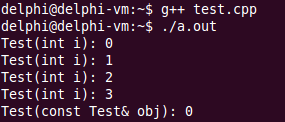
如果对象没有被初始化会发生什么,下面看一个示例:
#include <stdio.h>
class Test
{
private:
int mi;
public:
Test(int i)
{
mi = i;
printf("Test(int i): %d\n", mi);
}
Test(const Test& obj)
{
mi = obj.mi;
printf("Test(const Test& obj): %d\n", mi);
}
int getMi()
{
return mi;
}
};
int main()
{
int i = 0;
Test a1 = i;
while( i < 3 )
{
Test a2 = ++i;
}
goto End;
Test a(100);
End:
printf("a.mi = %d\n", g.getMi());
return 0;
}在 g++ 编译器下,就会报错,让不要使用 goto 语句,会跳过初始化

二、堆对象的构造顺序
对于堆对象
- 当程序执行流到达 new 语句时创建对象
- 使用 new 创建对象将自动触发构造函数的调用
下面看一个堆空间的构造顺序示例:
#include <stdio.h>
class Test
{
private:
int mi;
public:
Test(int i)
{
mi = i;
printf("Test(int i): %d\n", mi);
}
Test(const Test& obj)
{
mi = obj.mi;
printf("Test(const Test& obj): %d\n", mi);
}
int getMi()
{
return mi;
}
};
int main()
{
int i = 0;
Test* a1 = new Test(i); // Test(int i): 0
while( ++i < 10 )
if( i % 2 )
new Test(i); // Test(int i): 1, 3, 5, 7, 9
if( i < 4 )
new Test(*a1);
else
new Test(100); // Test(int i): 100
return 0;
}输出结果如下:
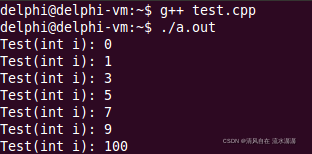
三、全局对象的构造顺序
对于全局对象
- 对象的构造顺序是不确定的
- 不同的编译器使用不同的规则确定构造顺序
下面看一个全局对象的构造顺序示例:
test.h:
#ifndef _TEST_H_
#define _TEST_H_
#include <stdio.h>
class Test
{
public:
Test(const char* s)
{
printf("%s\n", s);
}
};
#endiftest.cpp:
#include "test.h"
Test t4("t4");
int main()
{
Test t5("t5");
}t1.cpp:
#include "test.h"
Test t1("t1");t2.cpp:
#include "test.h"
Test t2("t2");t3.cpp:
#include "test.h"
Test t3("t3");在 gcc 编译器中,输出结果如下:

下面看一下使用 VS2012 编译这些代码:
(不知道 VS2012怎么使用命令行窗口编译程序的可以看《命令行》不需要可以跳过)

这足以说明全局变量的构造顺序是不确定的。
命令行
以下面的代码为例
test.h:
#ifndef _TEST_H_
#define _TEST_H_
#include <stdio.h>
class Test
{
public:
Test(const char* s)
{
printf("%s\n", s);
}
};
#endiftest.cpp:
#include "test.h"
Test t4("t4");
int main()
{
Test t5("t5");
}t1.cpp:
#include "test.h"
Test t1("t1");t2.cpp:
#include "test.h"
Test t2("t2");t3.cpp:
#include "test.h"
Test t3("t3");第一步,打开 VS2012,选择 工具 -> Visual Studio 命令提示
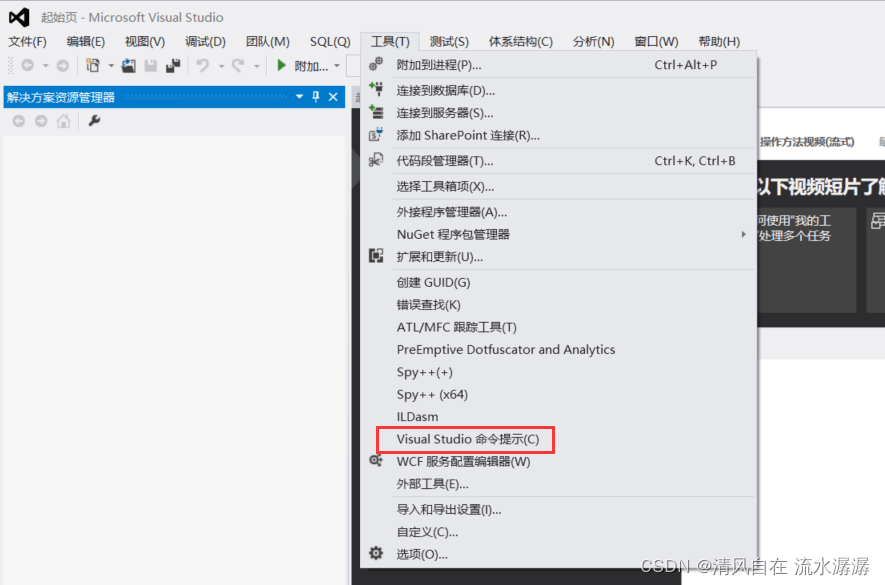
第二步,实用 cd/d 进入需要编译的文件夹。(注意换盘符需要输入/d)
我想要编译的文件在C:\Users\HuZeQiu\Desktop\demo 文件夹里。

输入cd/d C:\Users\HuZeQiu\Desktop\demo,按下回车键,如下,就转到了目的文件夹

第三步,输入 cltest.cpp t2.cpp t1.cpp t3.cpp -otest.exe 编译程序。(cl 命令是用来编译程序)按下回车键后开始编译,生成 test.exe 可执行文件,如下:
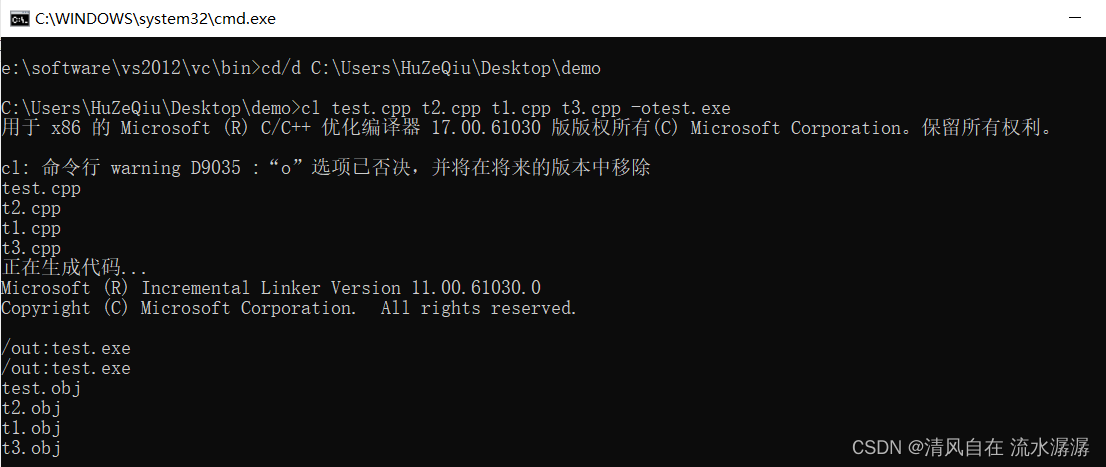
第四步,运行 test.exe,直接输入 test.exe 即可,就可以看到运行结果

编译后的文件夹如下:
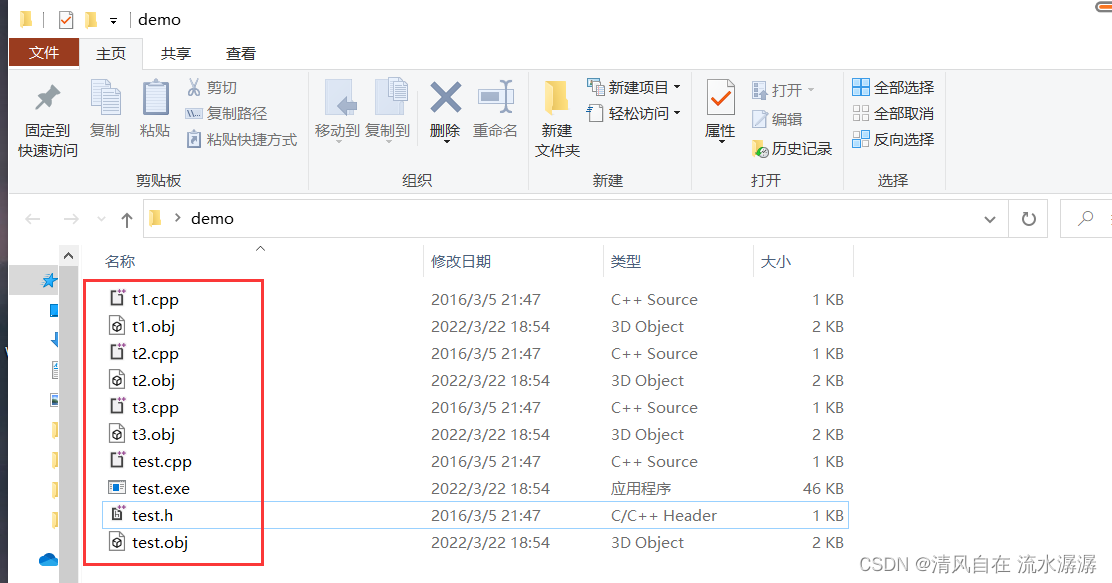
四、小结
- 局部对象的构造顺序依赖于程序的执行流
- 堆对象的构造顺序依赖于 new 的使用顺序
- 全局对象的构造顺序是不确定的
加载全部内容